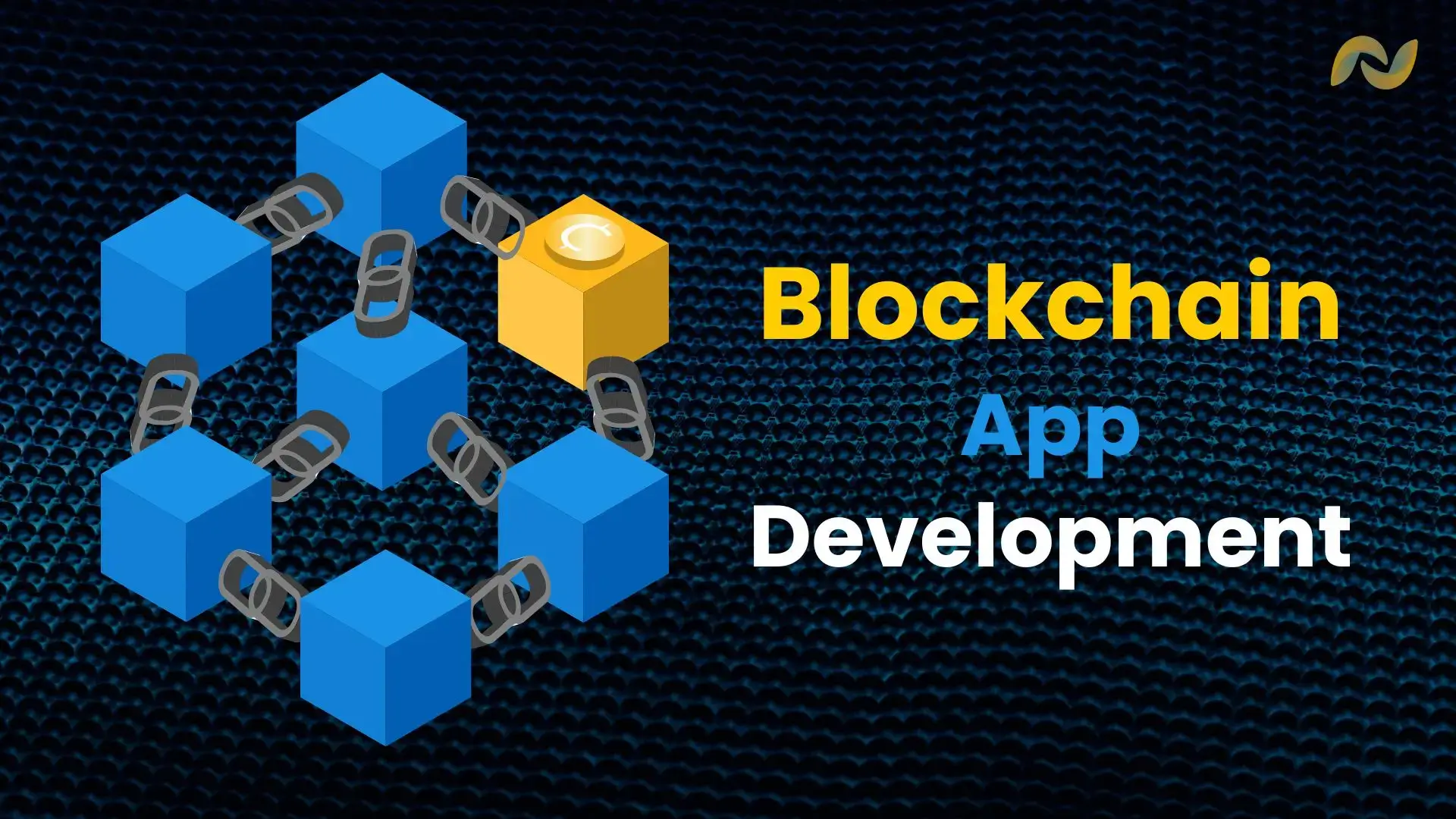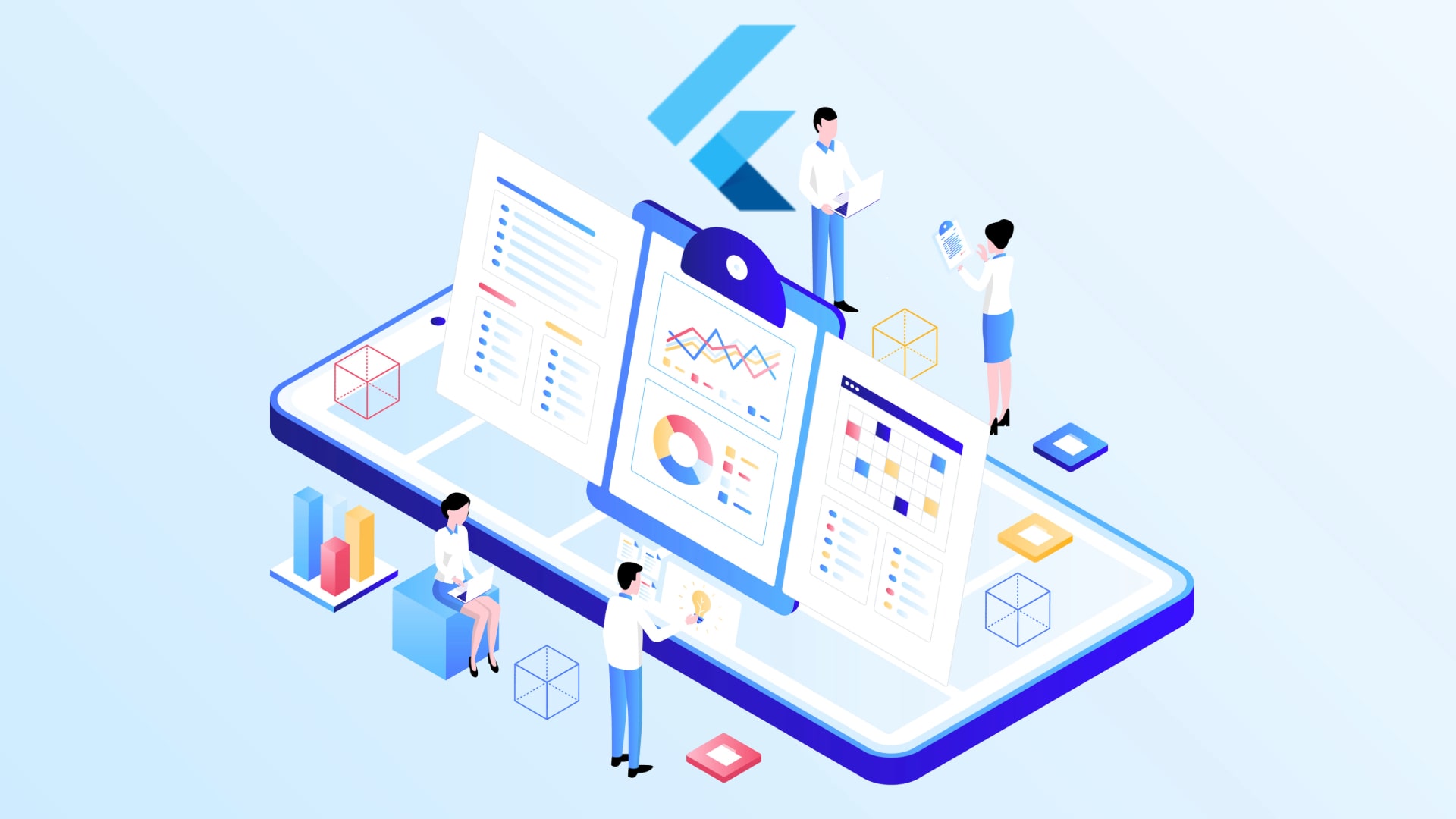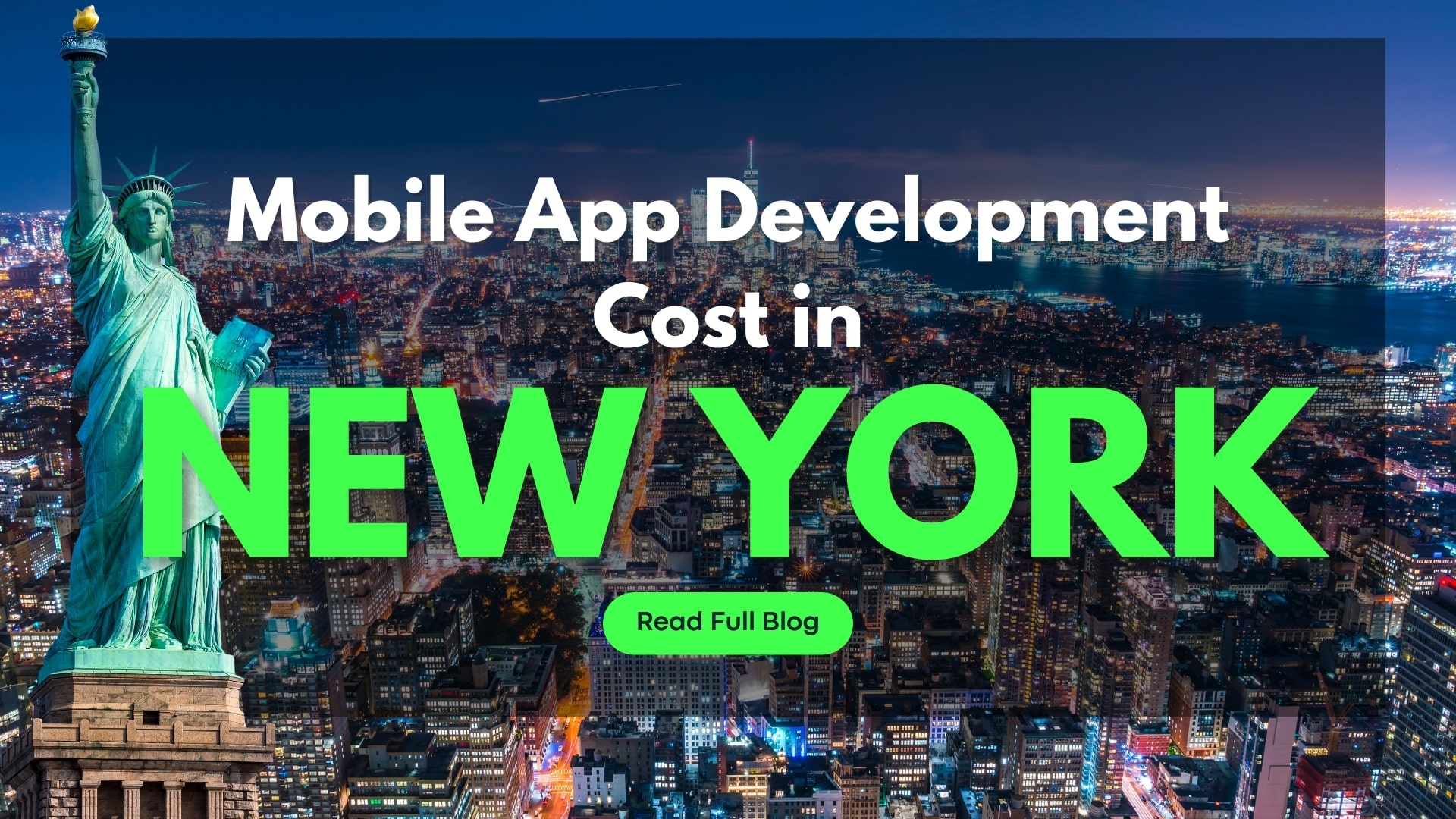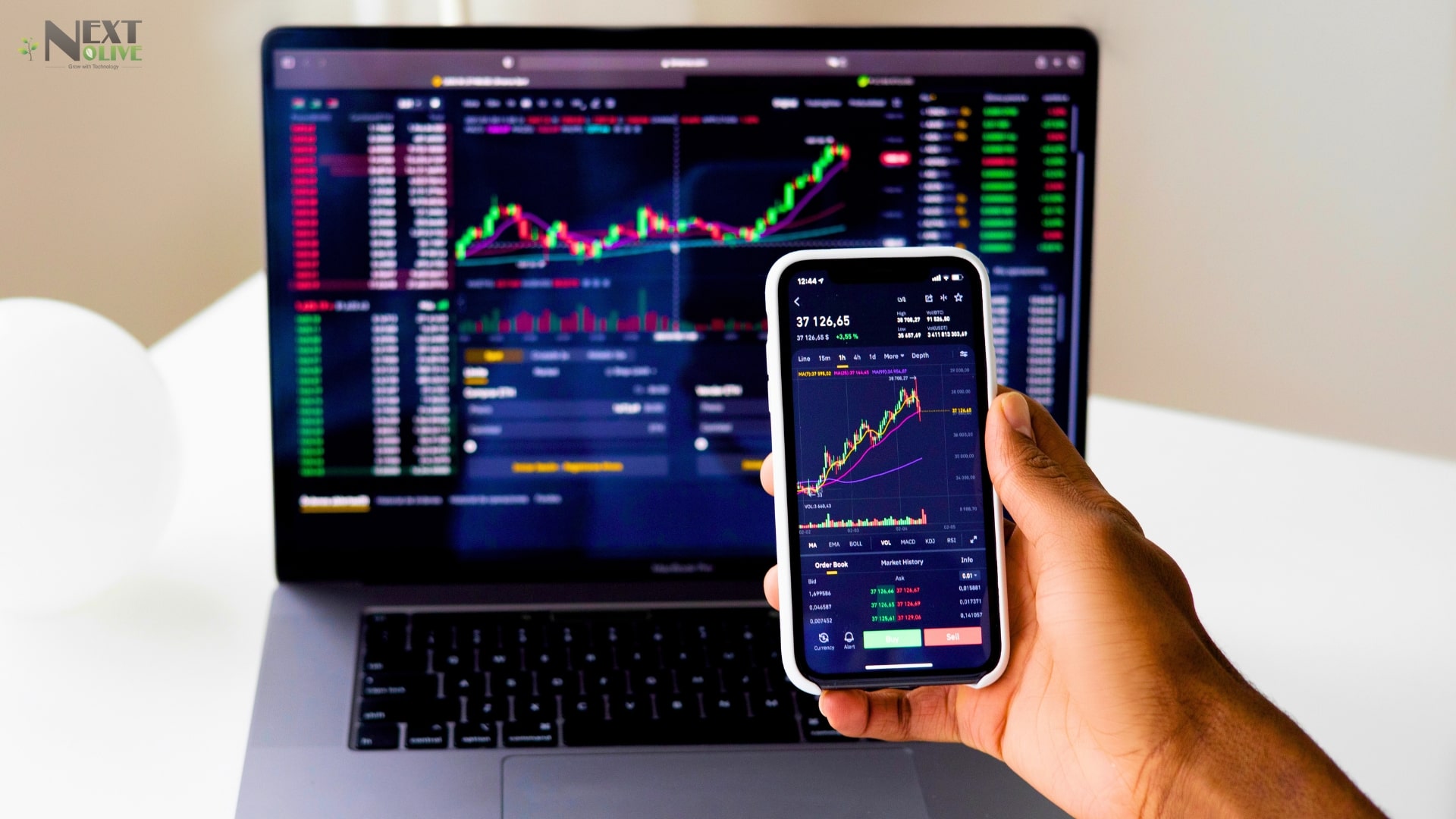How to Build a Blockchain App in 2025: A Complete Guide
In the modern digital landscape, security and transparency are necessary for businesses that rely on monetary transactions. Blockchain is one such technology that ensures security, transparency, and decentralization in transactions, and industries today are investing heavily in blockchain app development in 2025. Whether you are a firm looking to improve operational efficiency or a mobile app developer looking to explore the possibilities blockchain can provide in mobile applications, this guide breaks down the complexities of developing a blockchain application and the factors involved in the whole process.
Table of Contents
ToggleWhat is Blockchain?
Blockchain is a decentralized ledger that records data across different computer systems, enabling a secure and transparent environment that does not allow hackers to get their hands on sensitive data. Due to its transparent nature, anyone in the network can verify the transactions. Blockchain helps businesses by removing mediators and increasing the overall efficiency.
Global Market Statistics of Blockchain Application Development in 2025

According to a report published by The Business Research Company, the market size of blockchain development was $29.93 billion in 2024 and reached $49.18 billion in 2025. With a CAGR of 44.9%, it is expected to grow to $216.82 billion in 2029.
How Blockchain Works?
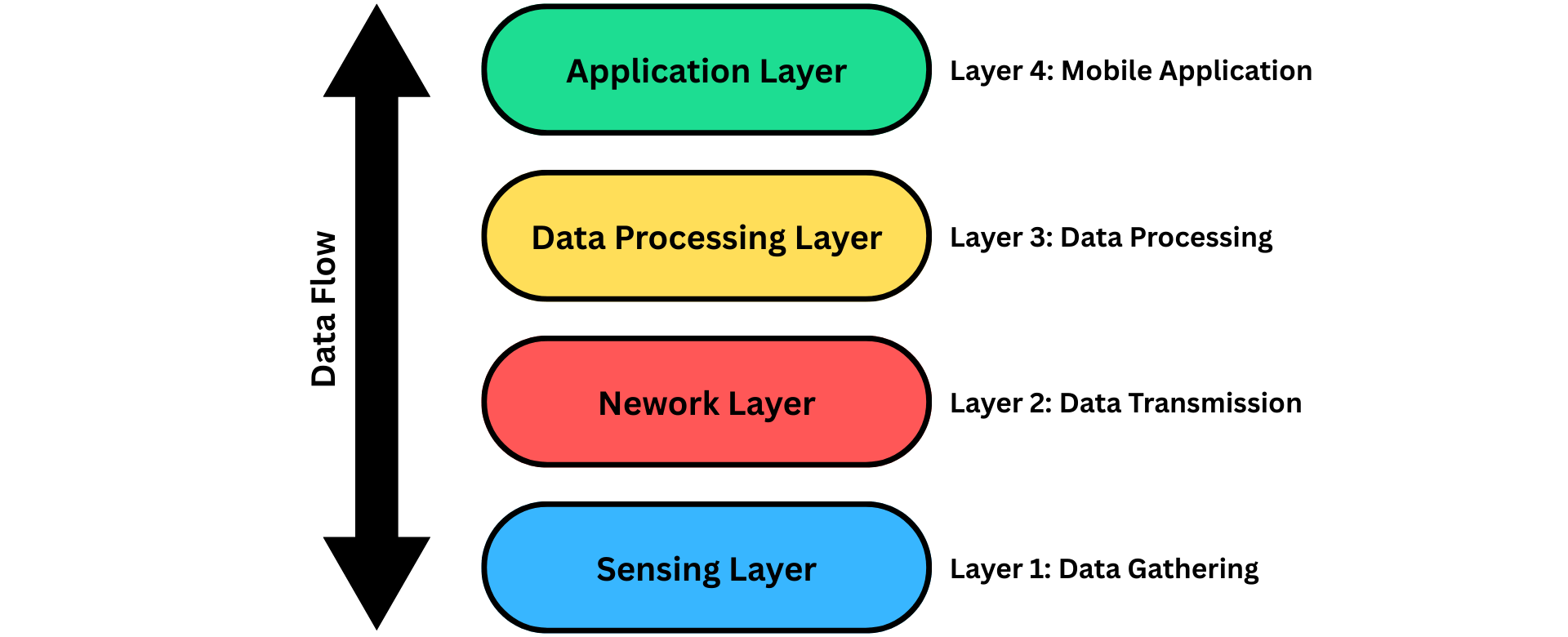
Blockchain is a powerful technology and has several stages of working. Blockchain works by storing data in blocks. Each block consists of a timestamp, transaction data in the form of a Merkle Tree, previous block hash for linking to a previous block. This creates a chain of multiple blocks, and each block is built upon its previous block; it becomes impossible to modify previous data without altering the succeeding block and gaining approval from the network. This enables a fool-proof and robust security system that is impossible to hack. Here is the working of blockchain:
[1] Enabling Transaction
In this stage, a new transaction is initiated, and it enters the blockchain network. The transaction information is heavily encrypted using public keys and private keys before initiation.
[2] Verification of the Transaction
When the transaction enters the network (node), it needs to be verified and validated to check whether it has sufficient balance to be executed. It is done by transmitting the transaction to various computers across the world, and consensus mechanisms such as Proof of Work (PoW) or Proof of Stake (PoS) are performed on it.
[3] Creation of a New Block
After the transaction is verified by consensus mechanisms, a new block is formed. Each block contains crucial information such as transaction data, timestamp, and cryptographic hashes of the previous block, and a unique identifier such as a Nonce.
[4] Linking of the Blocks
Each new block is linked with the previous block cryptographically to form a continuous and unbreakable chain.
[5] Consensus and Finalization of the Block
In this stage, all the verified blocks are permanently added to the chain. This ensures validity, transparency, trust building, and decentralization of the blocks.
[6] Completion of the Transaction
Once the block is permanently added to the chain, the transaction is completed, and all the details of the transaction are permanently stored in the blockchain securely.
Use Cases of Blockchain in Various Industries
[1] Financial and Payments Applications
These types of apps are widely used nowadays. Blockchain in these apps offers transparent, secure, and seamless financial transactions without depending on traditional financial gateways. These applications leverage smart contracts to fully automate payment processes and settlements while reducing errors and delays. Blockchain enables peer-to-peer transactions and digital asset management in a more secure and tamper-proof way.
[2] Logistics and Supply-Chain Apps
The logistics and supply chain industry is very big and a lot of important and sensitive transactions take place every minute. Blockchain provides transparency in the product movement process from manufacturing to delivery, helping businesses reduce fraud, track inventory in real-time, and minimize inefficiencies in the operations. Due to the decentralized nature of these apps, anyone in the network can verify the origin and quality of the material and product. This helps in building trust between consumers and suppliers.
[3] Healthcare Apps
In healthcare and medical sectors, blockchain plays an important role by enabling accessible, secure, and accurate storage of patient data records, which improves the overall privacy and data integrity. These applications help in streamlining the processes of medical research, insurance claims, prescriptions, and much more. Blockchain also ensures that the medical records are tamper-proof, and those who have authorized access can view them.
[4] Authentication and Identity Apps
Privacy and personal data security are major concerns in the digital realm. To deal with the issues, identity applications are used to safely store user information. These applications store the personal information of the users in a safe and secure, and decentralized way. This helps government authorities and businesses to verify the identity of the person using cryptographic security techniques and ensures reliability in the verification process.
[5] Gaming and Digital Ownership Applications
In the world of gaming, blockchain helps users to prove their ownership of virtual assets and goods. Many digital creators can trade digital items without any middleware in decentralized marketplaces easily and securely. Blockchain offers uniqueness in digital assets and prevents duplication and unauthorized access.
Difference Between Centralized and Decentralized Apps (DeX)
[1] Centralized Apps
Centralized applications are those apps that are stored on a server and are controlled and maintained by a single authority. Every action and operation performed by the user on the application is processed through the centralized system. These applications offer better control, regular updates, and provision for scalability. Some examples of centralized apps are Binance, Coinbase, WazirX, Facebook, WhatsApp, Instagram, etc.
Advantages:
- Control of a Single Authority.
- Data is Stored on Centralized Servers.
- Easier to Maintain and Update.
- Can Handle a High Amount of Traffic.
Disadvantages:
- High Maintenance Costs.
- Single Point of Failure.
- Security Vulnerabilities.
- Risk of Control and Censorship.
[2] Decentralized Apps
Decentralized applications, or DApps, are those apps that work without any central authority. These apps use blockchain or peer-to-peer networks to process and store data. DApps distribute the data and operations across various computers or nodes across the world. Hence, they cannot be controlled and are immune to a single point of failure. Web3 app development is also used in decentralized mobile app development. Some popular examples of decentralized apps are Uniswap V3, Orca, Aerodrome SlipStream, Meteora, OpenSea, and more.
Advantages:
- Enhanced Security.
- Trust and Transparency.
- Better User Privacy and Control.
- No Control of a Single Authority.
Disadvantages:
- High Energy Consumption.
- Irreversible Transactions.
- Limited Adoption and Integration.
- Complex User Experience.
Types of Apps Based on Blockchain Technology
[1] Cryptocurrency Wallet App
As the name suggests, a cryptocurrency wallet app is a decentralized app that is used to send, store, and receive cryptocurrencies, along with security and transparency in transactions. Many crypto wallet app development companies leverage blockchain and offer and have many crucial features such as multi-signature authentication, real-time exchange rate analysis, cold storage, portfolio management, etc. Examples: Coinbase, TrustWallet, Electrum, etc.
[2] Finance Apps (DeFi)
Decentralized finance applications have reimagined traditional financial services by removing the need for any intermediaries such as banks, due to which users can gain access to financial services across the world without relying on centralized systems. These applications enable p2p lending, trading, and borrowing using blockchain. Examples: Uniswap, Compound, SushiSwap, etc.
[3] Smart Contracts Apps
Smart contracts are one of the most widely used types of blockchain-based apps. These apps execute an agreement when certain predefined conditions are met and help to reduce costs and eliminate the possibility of fraud and ensure immutable records, which builds trust among the users. These apps are used in industries such as supply chain, logistics, real estate, etc. Examples: Polkadot, Solana, BNB Smart Chain, etc.
[4] Voting Apps
Voting apps secure the vote records on a blockchain-based ledger. This ensures transparency and makes the vote tamper-proof. These apps enable remote voting with full data protection and privacy. Voting apps are used by government and private organizations for public elections, corporate voting, etc.
[5] Non-Fungible Token (NFT) Apps
NFTs were popular in 2020 and 2021. Through these apps, users can buy, sell, and trade unique digital assets such as art, music, graphics, collectibles, etc. By using blockchain technology, each asset is unique and cannot be replicated or modified, ensuring the user can easily monetize them with authenticity and full ownership through marketplaces and auctions. Examples: Cryptopunks, Axie, etc.
[6] IoT Apps
Internet of Things app development are also based on blockchain nowadays. These apps are used to connect various smart devices together in a safe network for seamless data transfer and communication among them. IoT apps automate processes and improve the efficiency of operations. These apps are used in many sectors such as healthcare, manufacturing, supply chain, logistics, etc.
Features of Blockchain Applications
[1] Decentralization
Since the blockchain apps do not run on a centralized server, the data is spread across multiple computers or a peer-to-peer network.
[2] Enhanced Security
Blockchain uses interlinked blocks and advanced cryptographic techniques to store data. Data can only be accessed by those who have the private key to decrypt it.
[3] Transparency
Decentralized apps offer the ability to view the transaction by anyone present in the network of the app.
[4] Immutability
The data once stored in the blockchain cannot be altered by any means. So, there is nothing to worry about the data being tampered with.
[5] Real-Time Updates
In blockchain apps, the data is stored, verified, and updated almost instantly.
[6] Smart Contracts
Blockchain apps offer self-executing contracts with terms and conditions written in code. It easily automates the processes without requiring any intermediate process.
[7] Distributed Ledger
Due to its centralized nature, every user can have full access to the ledger with consistency and accuracy.
[8] Controlled Access
One can provide permissions or no permissions on both public networks and private networks.
[9] Tokenization
In this feature, real-world assets can be replaced by digital assets such as NFTs and real estate etc.
[10] High Availability
Since there is no single point of failure, blockchain apps are resistant to any kind of failure and are available almost any time.
Blockchain App Development Process
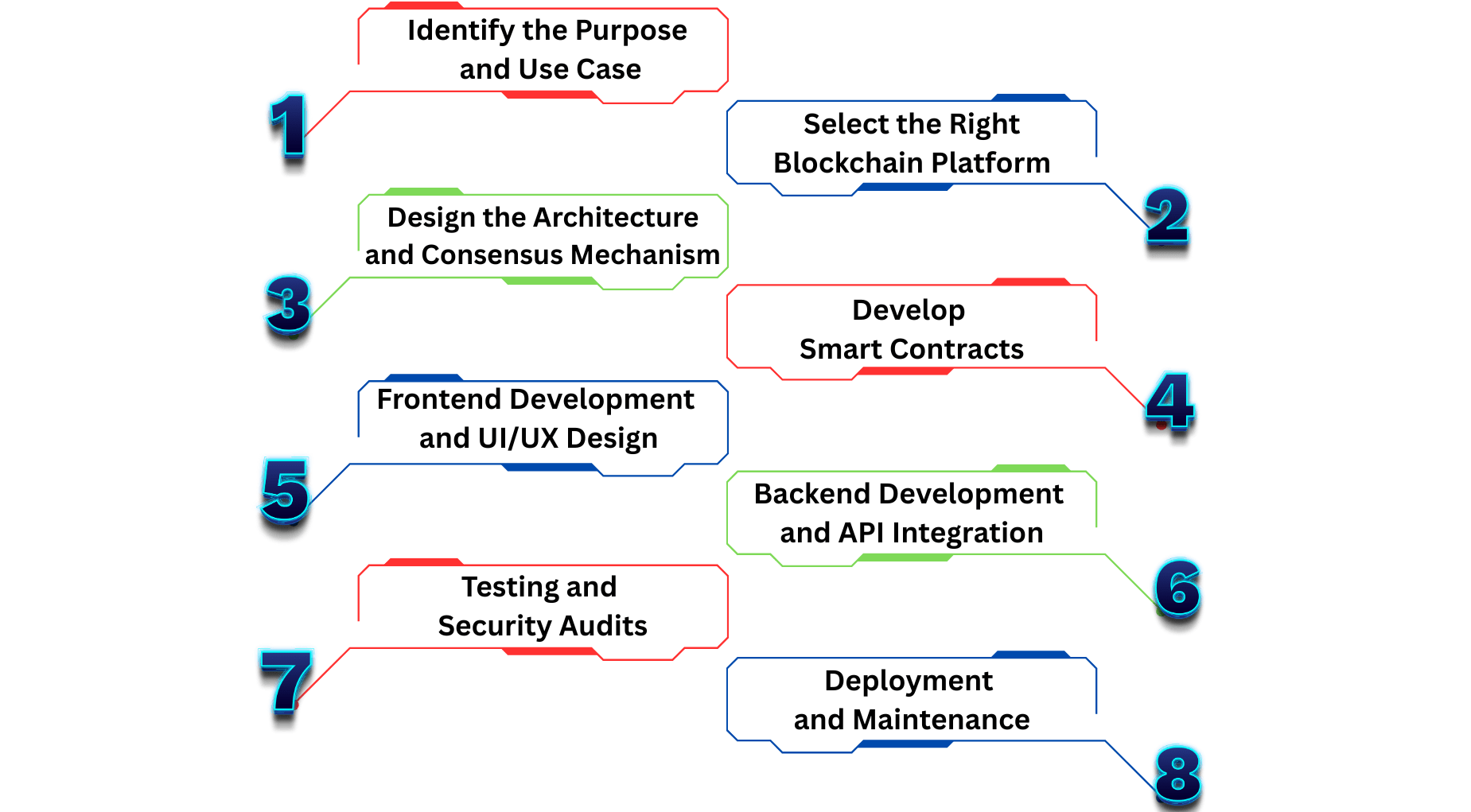
[1] Identify the Purpose and Use Case
Before you build a blockchain app, it is important to identify the purpose of the blockchain application and what real-world problem it will solve. This helps to properly shape the idea into a purpose-built application. Conduct market research and analyze your competitors to find out potential opportunities for innovation. An innovative app always adds value to the user. Also, determine in which sector it will serve, such as healthcare, supply chain, logistics, banking, etc.
[2] Select the Right Blockchain Platform
After the first stage, it is time to select a suitable blockchain platform for your application to ensure security, scalability, and efficiency. There are various types of blockchain available to use, each with unique features and functionalities. Some offer fast transactions and better privacy measures, while some provide advanced smart contracts. It is up to the project goals and objectives to decide the platform. You can also opt for public, private, or hybrid blockchains as per your requirements.
[3] Design the Architecture and Consensus Mechanism
In this stage, select the consensus mechanism for your app that determines how transactions are verified and added to the blockchain. Incorporate consensus methods such as Proof of Work, Proof of Stake, and Delegated Proof of Stake in the app. Also, design a robust architecture to define how the app will interact with the users, how the app will function, and process transactions while ensuring data integrity and smoother and efficient operations.
[4] Develop Smart Contracts
Developing smart contracts is crucial as they help to automate agreements and transactions without intermediaries. These smart contracts ensure reliable security and trust among the users. But keep in mind, develop the smart contracts with careful planning and precision, as they cannot be altered once deployed, and it is one of the core components of blockchain development.
[5] Frontend Development and UI/UX Design
The frontend is where the user interacts with the application. The frontend needs to be highly responsive, engaging, and intuitive to attract users and increase the retention rate. It should be accessible to users of all age groups and experience. The user interface should have smooth animations, ensuring each element focuses on usability.
[6] Backend Development and API Integration
Backend is the backbone of the application, and when it comes to blockchain, a reliable backend development is a must. The backend manages the overall interactions between the frontend of the app and the blockchain network. Integrating APIs ensures real-time data exchange and authentication of transactions. Implement security measures to protect the app from unauthorized access. Optimize the app for seamless and faster query responses.
[7] Testing and Security Audits
After the application is developed, it is time to test it for any flaws. Identify bugs, errors, performance and optimization issues, security risks, etc. Use different types of testing techniques such as unit testing, integration testing, stress testing, security testing, functional and non-functional testing, etc, by developing test cases. Ensure the app runs smoothly on the blockchain network in a simulated environment before its deployment.
[8] Deployment and Maintenance
Now it is time to deploy the app on the respective blockchain network. But deployment is just one thing, regular maintenance is necessary to keep the app working fine without any issues. Fixing performance issues, adding new features and functionalities, adding security patches, etc, are part of this stage and should be conducted on a monthly basis.
Tech Stack to Use in Blockchain Application Development
[1] Blockchain Platform:
- Ethereum
- Binance Smart Chain
- Hyperledger Fabric
- Polygon
- Solana
[2] Smart Contract Development
- Solidity
- Rust
- Go
- Vyper
[3] Frontend
- Angular.js
- React.js
- Vue.js
[4] Backend
- Python
- Golang
- Java
[5] Database
- PostgreSQL
- MongoDB
- Firebase
- IPFS
[6] Wallet Integration
- MetaMask
- Trust Wallet
- WalletConnect
[7] SDKs and APIs
- Web3.js
- ethers.js
- Moralis
- Alchemy
- Infura
[8] Testing and Debugging Tools
- Turffle
- Hardhat
- Ganache
- Remix IDE
[9] Security and Auditing
- OpenZeppelin
- MythX
- Slither
- Certik
[10] Deployment and DevOps
- Docker
- Kubernetes
- AWS/GCP/Azure
- CI/CD Pipelines
Blockchain App Development Cost
The cost to develop a blockchain app depends upon several factors, such as:
[1] Complexity of the App
The app’s complexity matters a lot in determining the cost to develop a blockchain app. If the app is basic to medium complexity, developing it would be less time-consuming and resource-consuming because it will have fewer features and functionalities than a highly complex app that requires advanced integrations to expand its functionalities.
[2] UI/UX Design
UI/UX is what defines the application. It is the reason for the app’s first impression among the users and decides the success or failure of the application. A simple UI/UX would cost more as it would contain simple visual elements. But, a complex enterprise-level application would require advanced visual elements such as custom animations, etc, and would cost more to develop.
[3] Third-Party Integrations
Third-party integrations such as cloud systems, APIs, payment gateways, etc, that add more features and functionalities to the app. These integrations come with licensing fees or monthly subscription fees and are cost-effective to integrate rather than developing them from scratch.
[4] Post-Launch Maintenance and Updates
Every application requires timely maintenance and regular updates to keep it relevant in the market and among the customers, and it also works fine without any issues. New updates are rolled out to fix bugs, errors, security issues, and add new features and functionalities to the application.
- Basic App: $10,000 to $50,000.
- Medium-Complexity App: $50,000 to $100,000.
- High-Complexity Application: $100,000 to over $300,000.
How to Select the Right Blockchain App Development Company in 2025?
Selecting a blockchain application development company is an important task, as it is one of the major deciding factors of your app’s success. Certain factors should be kept in mind, such as the company should have expertise in developing blockchain applications and know how to implement complex security measures in the app. The firm should have an experienced team of blockchain app developers, and it should be able to deploy the app in the given time frame. The company should also prioritize end-to-end communication with the client, while keeping the client at the center of focus. Next Olive is the leading blockchain mobile development firm that has over 13 years of experience and over 150 experienced blockchain developers. The company offers blockchain app development services in over 20 different countries, such as the USA, UK, Australia, etc. You can hire them to develop your app as per your budget and maximize the quality of the end product.
Conclusion
In conclusion, developing a blockchain app requires dedication and expertise. Several different factors should be considered, such as the app’s goals and objectives, the type of app, the technology stack to use, and more. We also discovered the working of blockchain apps and their various features and functionalities, along with the end-to-end development process. At last, you can outsource your project to a reliable company to utilize the resources and time to deliver the best quality product within your budget. Whether you are planning for cryptocurrency application development or custom blockchain app development, this guide covers all the major aspects of building blockchain applications in 2025.
Frequently asked questions (FAQs)
The time required to develop a blockchain app depends on several factors, such as the type of app, size, and complexity of the application.
- Basic App: 2 to 4 Months.
- Medium-Sized App: 4 to 7 Months.
- Large-Sized App: 7 to over 12 Months.
Ethereum is a blockchain platform that allows developers to build decentralized applications and smart contracts on it and operate without any central authority to control it.
We use the Waterfall model and Agile model in our projects. Waterfall is used in projects with fixed requirements, while Agile is used in projects with changing requirements.
The cost of developing a blockchain app depends upon several factors such as type, complexity, and size of the app. Below is the general breakdown of the cost estimate:
- Basic App: $10,000 to $50,000.
- Medium-Complexity App: $50,000 to $100,000.
- High-Complexity Application: $100,000 to over $300,000.
Next Olive is the leading blockchain application development company that specializes in creating cutting-edge crypto wallet applications and also in web3 application development.

